Tone in music is the secret ingredient that gives each note its own special sound, vibe, and feeling.
It can turn a simple tune into a powerful emotional experience and help your music really speak to people.
Knowing how to use different tones is super important for any music producer who wants to make tracks that stand out and connect with listeners.
That’s why, today’s article, we’ll break down:
- The definition (and importance) of tone in music ✓
- Components that make up different tones ✓
- Understanding frequency and its impact ✓
- The role of timbre in music production ✓
- Harmonic overtones and their significance ✓
- Pitch and how it shapes music ✓
- Creating engaging, warm tones ✓
- The influence of different instruments on tone ✓
- Techniques for manipulating tone in your DAW ✓
- Much more about tone in music ✓
By the end, you’ll know everything about different tones and techniques so you can create expressive and professional-sounding tracks.
Plus, you’ll be able to manipulate tone to your advantage to ensure your music stands out and leaves a lasting impression.
Mastering tone will elevate your music and make it more interesting, helping you captivate your listeners on an emotional level (which is what it’s all about).
So, let’s dive in…
Table of Contents
What is Tone in Music?
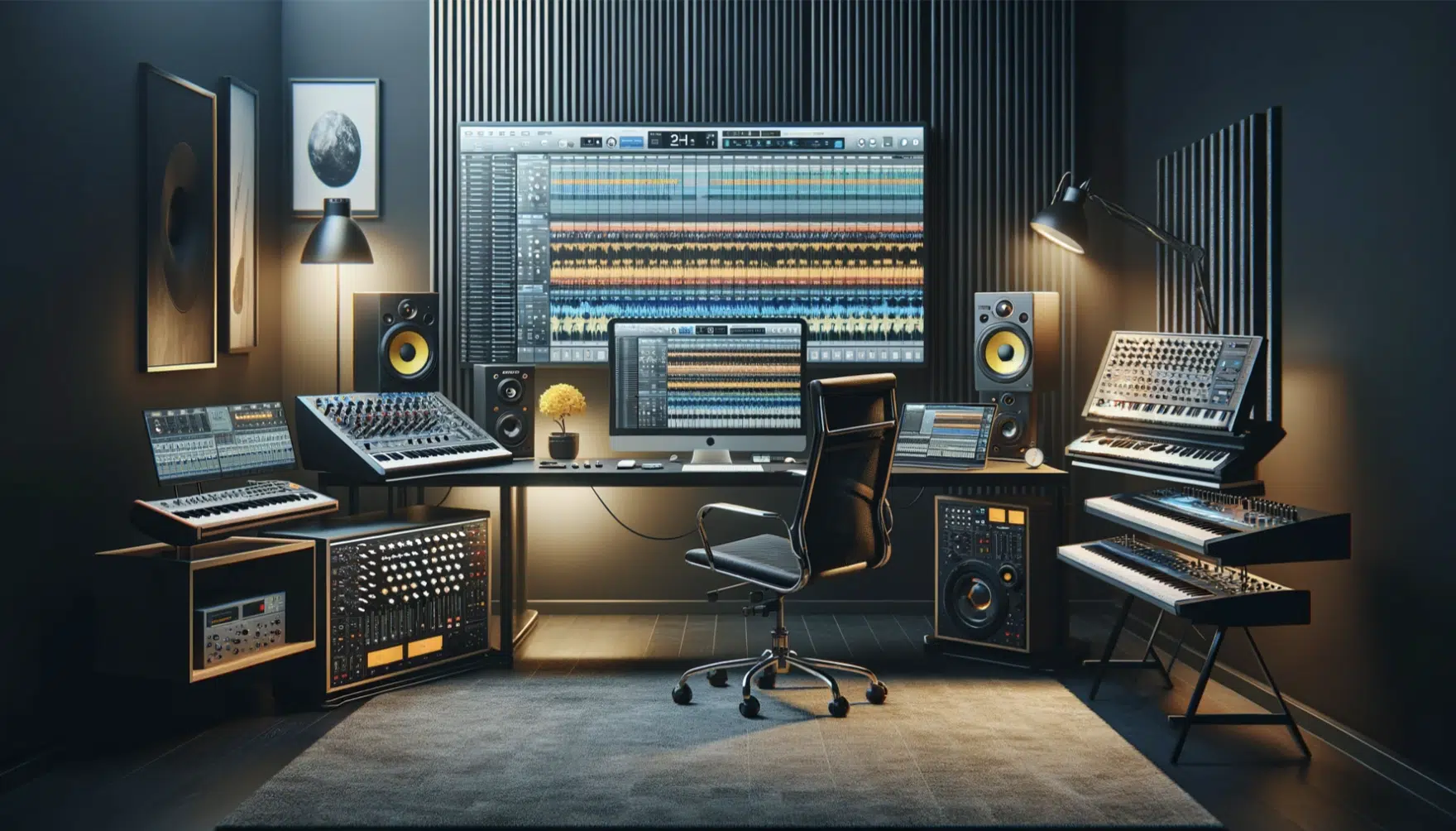
Tone in music is a foundational element that distinguishes one sound from another 一 giving each musical note its unique identity.
It involves the quality of sound that is produced by an instrument or human voice, shaped by its:
- Frequency
- Timbre
- Pitch
- Intensity
Understanding tone in music is key because it helps influence the overall emotion and feel of your track (making people feel connected to it).
Whether you’re creating a melody on a piano or designing a complex electronic soundscape, the tone sets the mood and connects with the listener on a deep level.
It’s not just about whether a sound is high or low, loud or soft, but encompasses the entire spectrum of sound quality.
This includes the warmth of a note played on a vintage guitar, the crispness of a digital synth lead, or the richness of a singer’s vocal cords.
Each decision you’ll make regarding tone, whether adjusting the on a track, choosing an instrument, or layering sounds, contributes to the texture and impact of your music.
It determines the difference between relatable/resonant and forgettable/basic.
And that’s exactly what we’re going to help you master today.
The Components of Tone
Exploring the components of tone in music reveals its complex nature and shows how different elements come together to create the sounds we love. Let’s dive into the specific aspects that define and influence tone 一 including frequency, timbre, harmonic overtones, and pitch.
-
Understanding Frequency: A Quick Recap
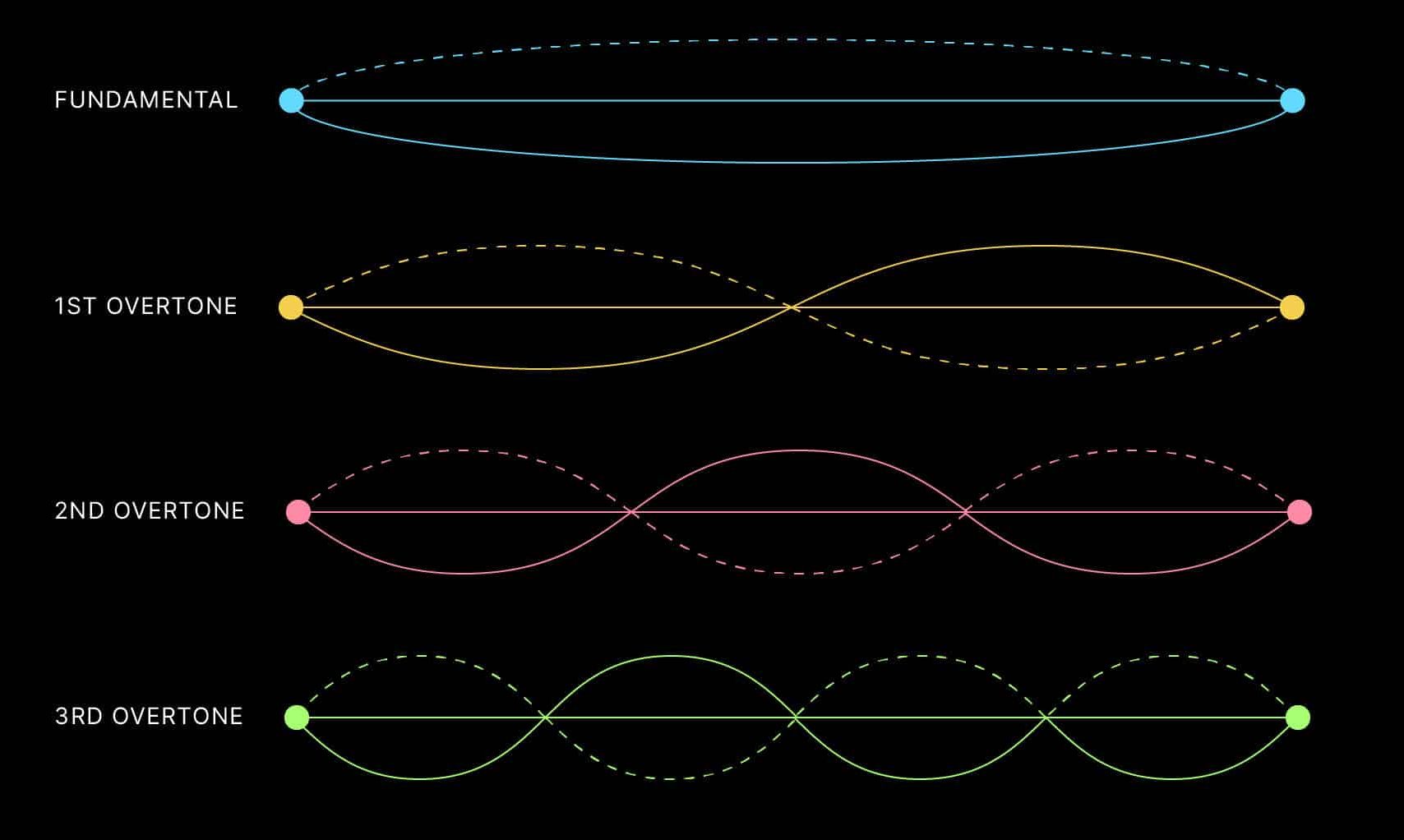
Frequency refers to the rate at which a sound wave vibrates.
Measured in Hertz (Hz), frequency determines the pitch of a sound, with higher frequencies producing higher pitches and lower frequencies resulting in lower pitches.
The fundamental frequency is the lowest frequency of a sound and is crucial in defining the perfect pitch of musical tones.
For example, when a guitar string is plucked:
- The fundamental frequency 一 Is the first sound heard (setting the note’s pitch).
- Additional frequencies 一 Add richness to the tone (known as overtones).
In music production, understanding and manipulating frequency is essential for crafting specific musical tones.
You’ll often use EQ to enhance or diminish certain frequencies (thereby altering the tone of an instrument or human voice).
For example, boosting the lower frequencies of a drum can give it a warmer tone, while cutting the high frequencies of a synth can make it sound smoother.
Mastering the use of frequency manipulation will help you shape the musical sound quality of your tracks.
It ensures each element sits perfectly within your mix.
-
The Role of Timbre
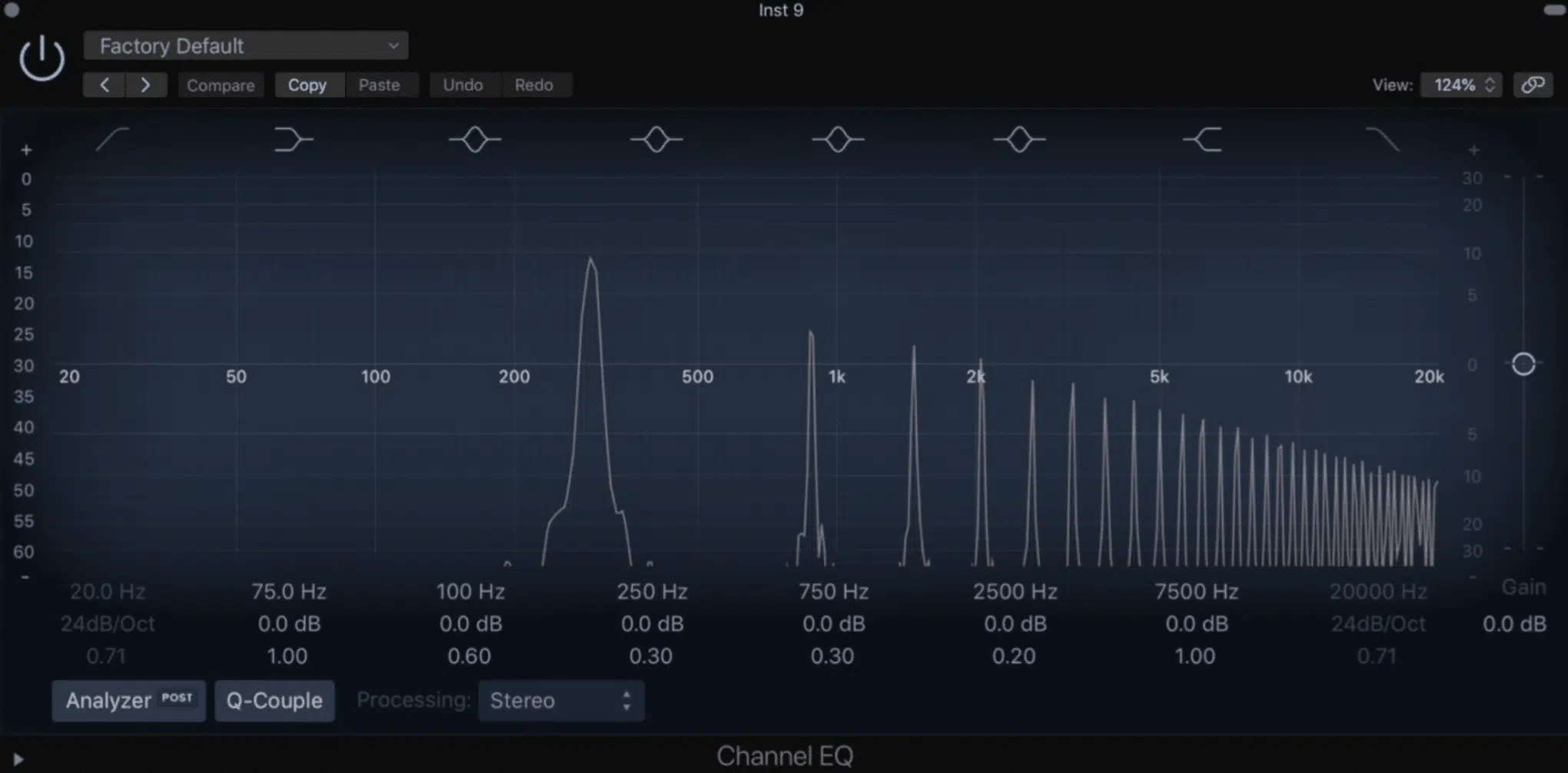
Timbre, often described as the “color” or “texture” of a sound, is what makes one musical tone distinguishable from another.
Yes, even if they have the same pitch and loudness.
It’s the characteristic that enables our ears to differentiate between the warm tones of a violin and the bright tones of a flute playing the same note.
Timbre results from the complex pattern of overtones produced by an instrument or human voice, combined with the way the particular sound:
- Is initiated
- Resonates
- Interacts with the environment
Timbre plays a key role in the selection of different instruments and the creation of unique sounds.
You should always choose many instruments (whether it’s two instruments or 10) and synth settings that offer the desired timbre.
This way, you can tweak each musical sound to fit the mood and style of the piece.
Make sure to play around and experiment to achieve the desired sounds/tones.
By adjusting various parameters such as filter cutoff, resonance, or using different synthesis techniques, you can significantly alter the timbre of a sound.
This control over timbre will help you create whatever mood you want to convey 一 it makes all the difference.
-
Harmonic Overtones: Explained

Harmonic overtones are a fundamental component of tone in music, adding complexity and richness to specific musical notes.
They are additional frequencies that occur alongside the fundamental frequency, each at a higher pitch and usually at fixed intervals above the fundamental.
These overtones contribute to the timbre of a sound 一 making each instrument’s tone unique and desirable.
For example, the harmonic overtones of a piano note create a bright, clear sound, while those of a cello produce a warm, resonant tone.
In music production, understanding harmonic overtones is key to designing and mixing sounds effectively.
Musicians like yourself can enhance certain overtones to highlight the character of an instrument or to make a particular sound stand out in a mix.
Techniques such as EQ boosting, harmonic excitation, or even specific recording methods can be used to manipulate overtones.
In turn, it shapes the final tone of your music.
-
Pitch and Its Significance
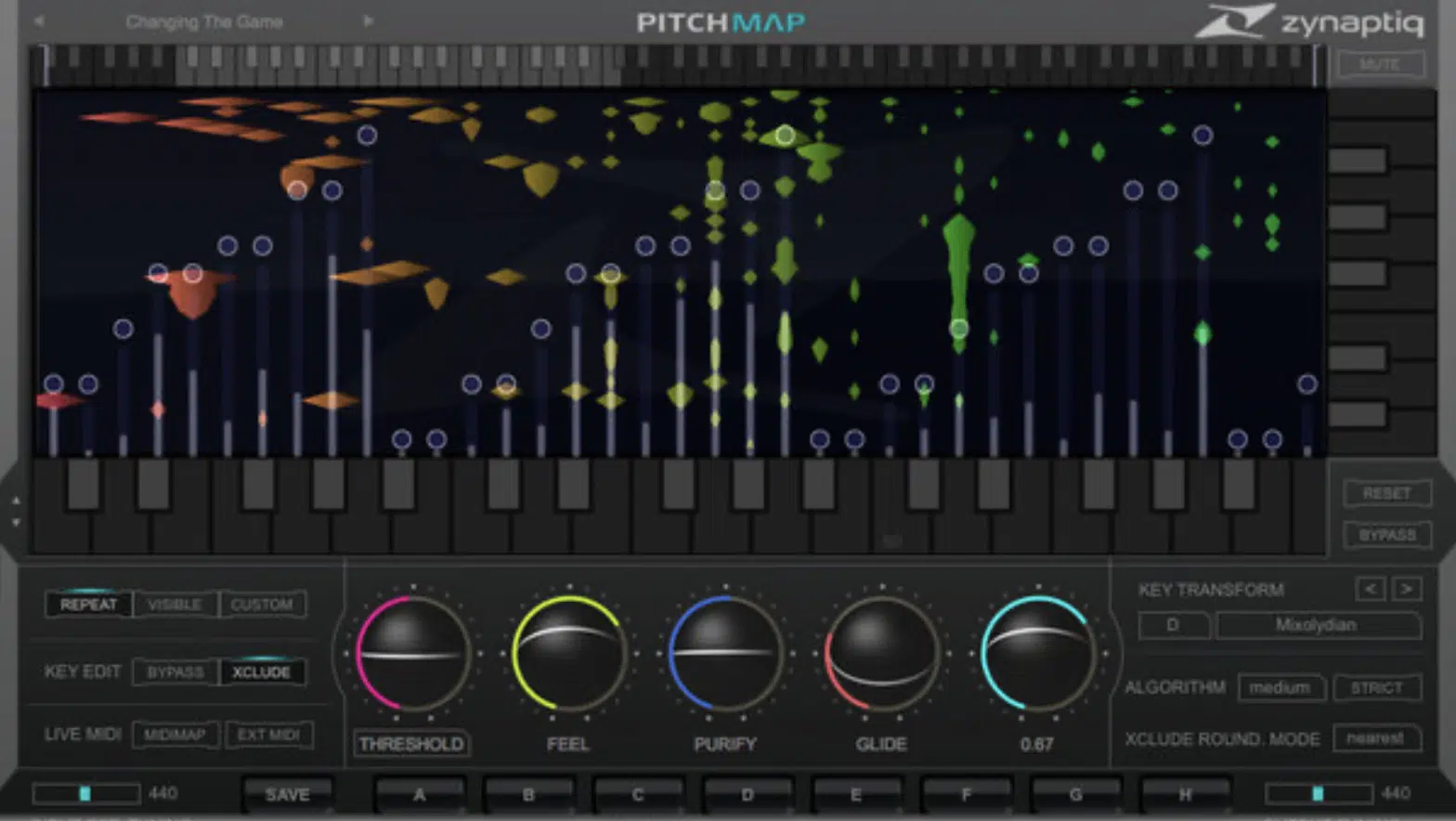
Pitch is a critical component of tone, indicating the certain frequency level of the musical sound and determining how high or low it appears to the human ear.
It’s fundamental in music theory and practice, as it helps to organize specific musical notes into melodies and harmonies.
Adjusting the pitch of just one note can transform the entire melody 一 altering the track’s overall feel and direction.
It’s the difference between basic tones and legendary melodies.
Try to play around with pitch to create unique effects in your music, such as the popular ‘chipmunk effect’ you hear playing in certain genres.
It’s achieved by significantly increasing the same pitch of a vocal track.
This not only alters the tone but also adds a play ful or surreal quality to the music, demonstrating how pitch manipulation can be a powerful expressive tool.
Polyphonic Texture vs Monophonic Texture
Polyphonic texture, where multiple independent melody lines are played simultaneously, and monophonic texture, characterized by a single melody line without harmonic accompaniment, represent two fundamental approaches to arranging warm tones.
Let’s quickly break down the difference between polyphonic textures and monophonic textures because it’s of great significance as a music producer/musician.
-
Polyphonic Texture
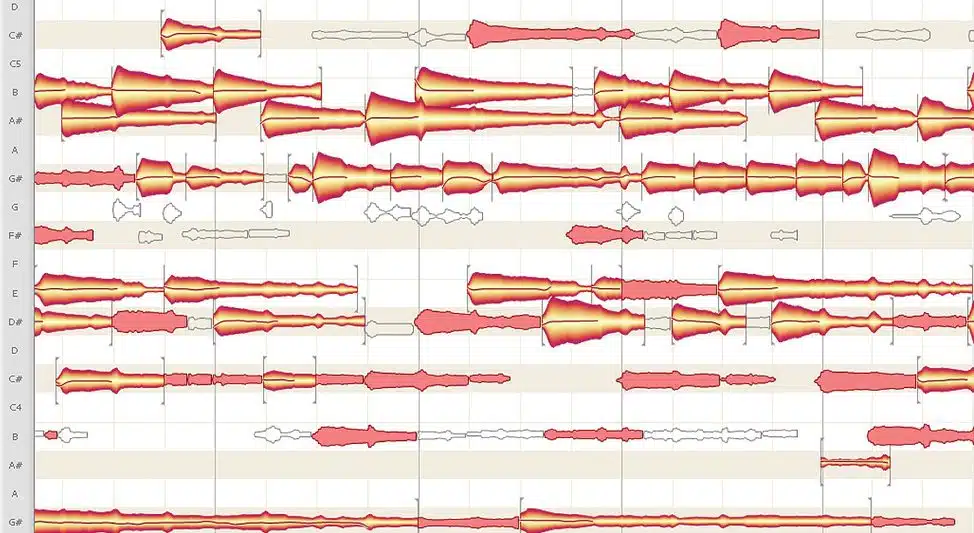
Polyphonic textures offer a complex, richly layered listening experience, as found in classical compositions or intricate electronic music tracks.
For example, you might layer several synthesizer lines, each with distinct timbral qualities, to create a dense, engaging polyphonic texture.
Just try playing around with different texture techniques for any context so you can get the hang of it.
-
Monophonic Texture
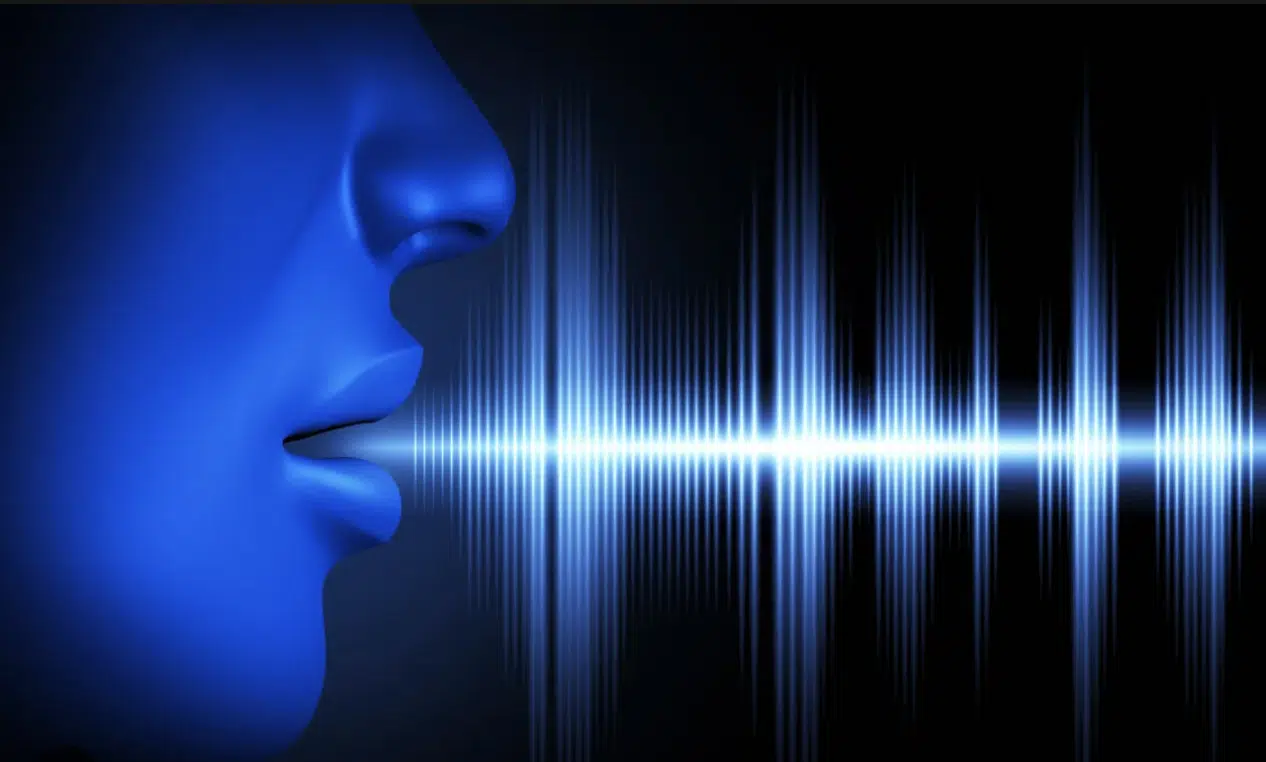
Monophonic textures provide clarity and focus, often used in solo vocal performances or instrumental pieces where a single melody line takes center stage.
This simplicity can be powerful 一 allowing the listener to fully engage with the purity and emotion of the melody.
As musicians, creating a captivating monophonic texture might involve certain tone selection and manipulation techniques.
This can include adjusting the timbre and envelope parameters of a lead synthesizer to ensure it carries the emotional weight with impact.
-
Pro Tip: The Harmonic Series and Music Production
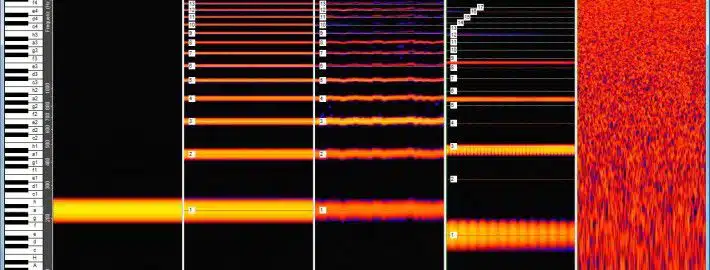
Understanding the harmonic series is a game-changer in music production.
It gives you insights into how different overtones contribute to the perception of timbre and warmth in tones.
You can use that harmonic series knowledge to enrich the texture of your music.
For example, by subtly enhancing the second and third harmonics to add warmth and fullness to a bassline.
Or, by designing a synth patch that emphasizes specific overtones to create a signature sound.
This advanced harmonic series technique not only improves the sound quality but also adds a level of depth and professionalism to your music.
It makes it more engaging and emotionally resonant so your listeners get hooked when they hear/listen to it, which makes a big difference.
NOTE: Musicians often find that warm tones, when paired with the subtle difference of a half-step or two semitones between two notes, can significantly enhance depth and complexity.
-
Utilizing Your Piano Roll for Good Tone Manipulation
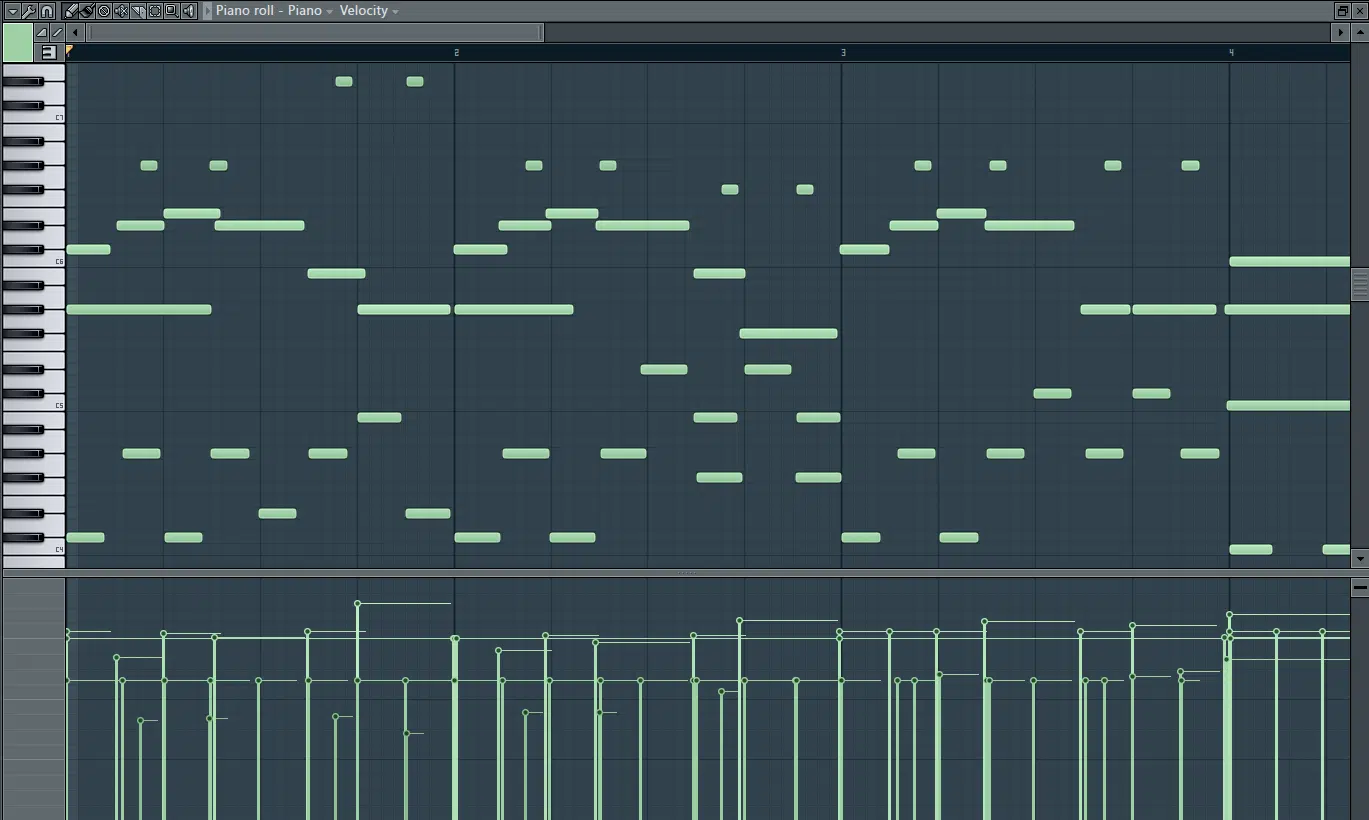
FL’s Piano Roll
The piano roll in your DAW is also a powerful tool as it allows for precise manipulation of multiple notes and their characteristics.
This includes:
- Pitch
- Duration
- Velocity
By adjusting these parameters, you can significantly alter the tone and emotional impact of a piece.
For example, increasing the velocity of a note in the piano roll can not only make it louder but also trigger a more intense timbre from a virtual instrument.
It gives the notes a brighter, more urgent quality.
This technique is particularly effective in dynamic music sections, where the emotional intensity needs to gradually build.
Also, with your piano roll, you can edit the MIDI data which can be used to create complex rhythmic patterns or complex sequences in melody that contribute to the certain tone/context of the music.
By carefully placing multiple notes and adjusting their lengths, you can mimic the natural intracacies of a live performance.
This will help add a layer of expressiveness and texture to your music.
An example of this might be a piano part where the timing of each note is slightly off the grid 一 lending humanized, warm tones to the digital performance.
These warm tones and realistic sounds make it feel more alive (and appealing, of course).
Melody and Tone: How to Create Catchy Tunes
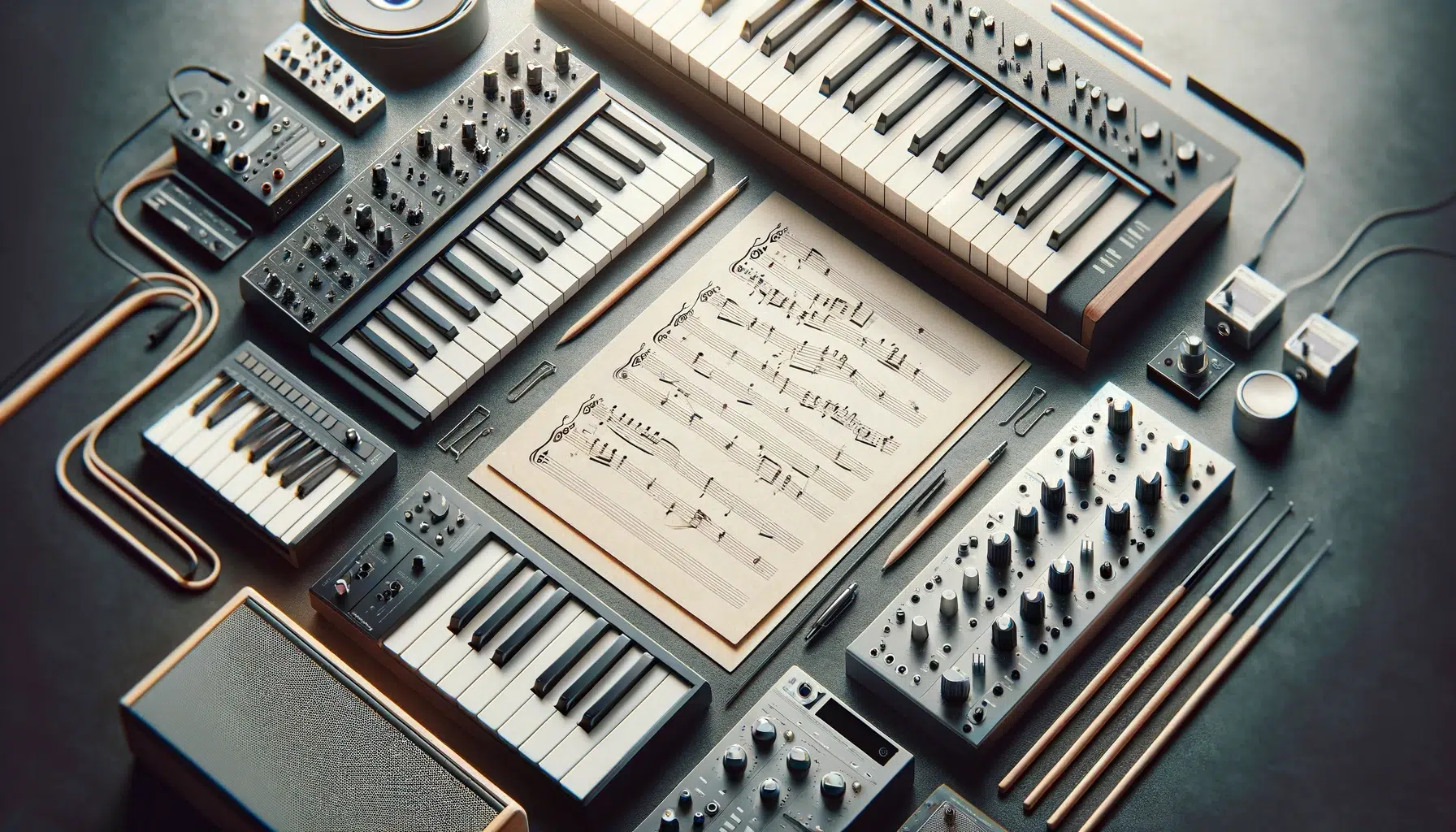
Producing a catchy track isn’t just about choosing the right notes and musical scale (like the chromatic scale).
It’s also about picking the perfect complex tone to deliver those notes.
Think of tone as the flavor of your music 一 it can make your melody sweet, spicy, or anything in between.
For example, let’s say you were playing a catchy melody with a bright, electric guitar tone.
It will feel lively and energetic when it hits the ears, perfect for pop song tones.
Now, play the same melody but with a soft piano tone, and suddenly, the mood shifts to something more serene or sad.
This shows how changing the whole tone can change the vibe of your music.
If you’re working on a dance track and you’ve got a melody that needs to stand out, you might start with a basic synth sound, but it feels too plain…
By tweaking the synth’s settings you can transform that simple melody into the centerpiece of your track.
This can include adding some reverb for depth, adjusting the filter to brighten the warm tones, or layering it with a sampled string sound (strings).
NOTE
This blend of electronic tones and acoustic tones creates a unique sound that catches the ear.
It’s all about mixing and matching different tones and instruments, like strings, to make your melody not just heard, but remembered in the music industry (or tv/film music).
Tone in Music: Final Thoughts
Tone in music can make or break a song, giving your music extra life, emotion, and its unique qualities.
And now, you know how to use it to make your tracks stand out.
Understanding tone in music means you can create music that really connects with people, making them feel something special.
To get even better at this and really grasp the concept, you should check out the invaluable Free Project Files.
It’s a free pack that gives you 3 project files made by top producers and sound designers, with unmatched quality and educational value.
These files show you how professional tracks are put together in some of the most popular music styles.
By looking at these projects, you can see exactly how tone in music is balanced perfectly.
You can play around with the tone and frequencies yourself to experiment and learn so you can make music that sounds just as good as the legends.
With all this knowledge about tone in music, you’re ready to make unforgettable songs that not only sound great but make them really get emotionally invested.
Go ahead and use what you’ve learned to create music that people will remember (the world needs it).
Until next time…







Leave a Reply
You must belogged in to post a comment.